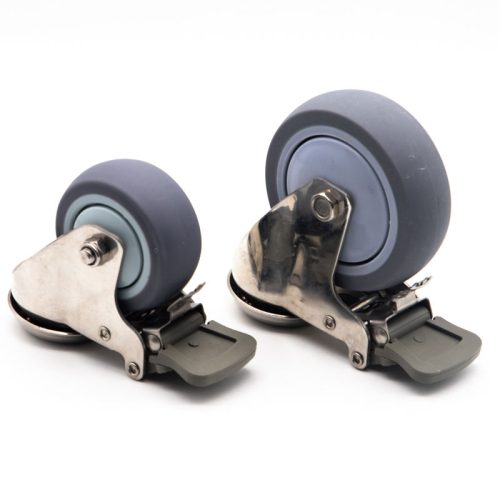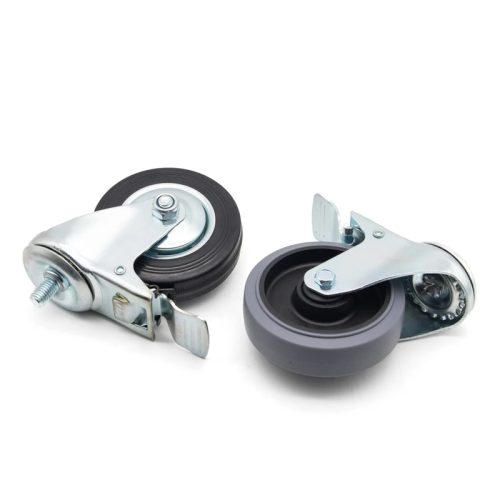In the fast-paced world of industrial settings, achieving the delicate balance between mobility and safety is no small feat. The introduction of locking casters, a versatile innovation, has proven to be a game-changer. This article delves into the advantages of using locking casters in industrial environments and how they enhance both mobility and safety.
1. Improved Maneuverability in Tight Spaces
One of the primary benefits of using locking casters in industrial settings is the enhanced maneuverability they offer. Industrial environments can be crowded and cluttered with equipment and machinery. Locking casters provide the flexibility to move heavy equipment with ease and precision, even in confined spaces. When the situation demands stability, engaging the locking mechanism ensures your equipment stays firmly in place.
2. Enhanced Safety Measures
Safety is paramount in industrial settings. Accidents can lead to injuries, downtime, and costly damages. Locking casters add an extra layer of safety. When equipment needs to remain stationary, activating the locks prevents unexpected movement. This is particularly critical when working with heavy machinery or hazardous materials, reducing the risk of accidents and ensuring the safety of workers.
3. Versatile Applications
Locking casters are incredibly versatile and suitable for a wide range of industrial applications. They can be employed in:
- Material Handling: For transporting heavy loads with stability and control.
- Assembly Lines: To move equipment and materials along the assembly process efficiently.
- Storage and Warehousing: For easy reconfiguration of storage spaces and safe mobility of shelving units.
- Maintenance and Repairs: Facilitating the movement of machinery for maintenance work while ensuring safety during repair operations.
4. Cost-Effective Mobility Solutions
Locking casters offer a cost-effective solution to enhance mobility within an industrial setup. They eliminate the need for additional equipment, such as forklifts or cranes, for short-distance transportation. This not only reduces operating costs but also streamlines workflow and saves valuable time.
5. Ergonomic Benefits
Locking casters also offer ergonomic benefits. Workers can easily move equipment into the ideal position for tasks, reducing strain and physical effort. When locked in place, these casters provide a stable and comfortable work environment.
6. Customization Options
Locking casters come in a variety of options, allowing customization to suit your specific needs. Factors to consider include wheel material (such as rubber, polyurethane, or metal), load capacity, and brake type. Tailoring your choice to your particular application ensures optimal performance and safety.
7. Easy Integration
Integrating locking casters into your industrial environment is straightforward. Most casters are designed for simple installation and come with clear instructions. Whether retrofitting existing equipment or incorporating locking casters into new machinery, the process is generally hassle-free.
In conclusion, locking casters have become indispensable in industrial settings, striking a perfect balance between mobility and safety. Their ability to provide enhanced maneuverability, improved safety measures, versatility, cost-effectiveness, ergonomic benefits, customization options, and ease of integration makes them an asset to any industrial operation.
As the industrial landscape continues to evolve, the benefits of locking casters in enhancing mobility and safety are undeniable. Incorporating these casters into your industrial environment can lead to increased efficiency, reduced risks, and a safer, more productive workplace.


